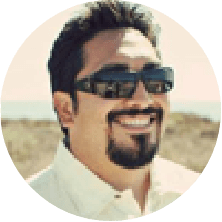Did you know? Bats are not blind. In fact, they see very well. However, their sense of hearing is so well developed and adapted for processing a large amount of data that they prefer to navigate with their ears. Just as humans process spatial data better with their eyes than with any other organ, bats are better adapted to determining their surroundings using their ears. It’s a centuries-old myth that bats are blind, and hopefully this 2-part blog post will help change your mind.
What is echolocation and why can bats navigate so well with it?
Echolocation is the use of sound waves and echoes to determine where objects are in space. Echolocation in bats was first documented by Don Griffin in 1939 in a Harvard laboratory. Bats vocalize a low-pitch (10 kHz) to high-pitch (>200 kHz) call or “chirp,” depending on the species, in regular intervals while flying to determine what is in their flyway. Since these sound waves are often vocalized at frequencies outside of the human range of hearing, they are considered ultrasonic. The sound waves bounce off an object, often as small as a moth or fly, and return to the bat’s ears to paint a picture of the object and its surroundings.
Bats have adapted very large ears, as seen in this spotted bat, to gather and process as much sound data as possible. It is very similar to the sonar utilized by dolphins and whales, and the sonar technology developed for submarines. Echolocation allows bats to roost in areas away from vision-oriented predators because they can inhabit areas with very low light and still navigate and “see” in the dark. Echolocation also allows bats to specialize in eating hard-to-catch prey since insects flying at night are nearly invisible to vision-oriented predators and can only best be “seen” using echolocation. However, some insects have been known to “play dead” after being hit by a bat’s vocalization and they will drop out of the air in anticipation of an approaching bat.
While echolocation paints a very clear picture of a bat’s surroundings, there are some disadvantages to echolocation. Bats have to continually vocalize to be able to create and subsequently hear echoes off their surroundings, and bats cannot listen for an echo while vocalizing. Therefore, while vocalizing, the bat misses any spatial detail that returns on the echo. In addition, continually vocalizing announces the bat’s presence to prey and other predators. You can imagine trying to sneak up on a deer while constantly shouting to understand where you are in relation to the deer. It is amazing that these creatures are able to catch anything at all. While bats’ frequent vocalizations may be a deterrent in catching prey, it is a huge asset to biologists trying to locate bats by their call.
The Science of Echolocation
When broken down, the science of echolocation is as simple as analyzing any sound wave and understanding wave technology. Sound waves oscillate up and down across an axis and are measured by velocity. Velocity, which is essentially constant, is made up of the frequency and wavelength of the sound wave (ν= ƒ x λ ). The wavelength gets smaller as the frequency gets higher. Like a wave hitting you on the beach, an object must be in line with a sound wave to produce an echo. The bat’s target must be larger than ½ the size of the wavelength of the produced call to generate an echo. As mentioned earlier, bats vocalize a low to high-pitch sound depending on species and depending on the size of their prey. Bats that use lower frequencies calls are constrained to larger targets because low frequency calls have longer wavelengths and therefore will capture less detail on the return echo. In contrast, higher frequency calls have shorter wavelengths and produce more detail, but at a shorter distance due to the shorter wavelengths.
We can hear some of these bat calls by ear, and others using a bat detector that picks up the frequency of the call and translates it into a frequency we can hear. You can record these detected calls and analyze them using computer software. When we analyze bat calls, we can break down a fully-captured call sequence into three categories: search phase, approach phase and the feeding “buzz.” The search phase of a bat call is used when hunting and searching for food, and consists of a long, drawn-out call with a relatively long period between vocalizations. Once an object is located by the echo, an approach phase begins where the call frequency is higher and with shorter intervals. A final terminal phase or feeding “buzz” is heard right before the bat approaches and captures its prey. The calls are so close together that when played back in low speed it sounds like the quick buzz of a bee.
Stay tuned for part 2 of this blog post to learn how biologists capture and use bat vocalizations to identify different bats.
FirstCarbon Solutions has a team of biological experts that can provide biological assessments, sensitive species investigations, and surveys for natural resources management. If you are interested in learning more about our many environmental and sustainability services, contact us.




